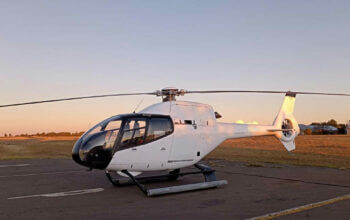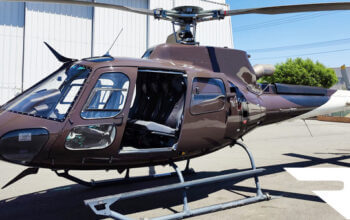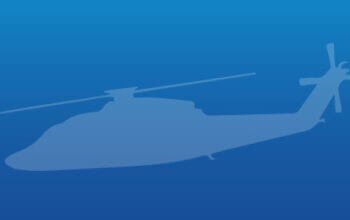Sikorsky is developing a hybrid-electric VTOL demonstrator vehicle as part of its effort to enter the advanced air mobility (AAM) space — with its Matrix autonomous technology at the heart of the new system, the company told Vertical.

The new system will use a turbine to generate electricity, said Igor Cherepinsky, director of Sikorsky Innovations. The Lockheed Martin subsidiary is on track to begin building the demonstrator aircraft sometime in 2023, he said. It will use the Matrix autonomy system as its core operating system.
The new vehicle will “be our first foray into what the next generation of commercial aircraft will look like,” Cherepinsky said. However, it would have applications across different sectors, with the eventual goal of developing “an electric propulsion system for both commercial and military applications.”
Sikorsky has further developed its Matrix autonomy system over recent years, perhaps most notably through its work with the Defense Advanced Research Projects Agency (DARPA) — with Matrix a key part of the Aircrew Labor In-cockpit Automation System (ALIAS).
The technology was on display in October 2022 at the U.S. Army Yuma Proving Ground in Arizona through the Project Convergence 2022 (PC22) technology gateway exercise, where DARPA and Sikorsky demonstrated the ability of an autonomous Black Hawk to conduct battlefield logistics missions. Such applications would form the backbone of any offering in the commercial sector as well, Cherepinsky said.
“The crux is that the workload is much lower and the machine understands a lot of the basic flying and basic mission parameters,” he said. “The aircraft can avoid obstacles, and it can pick landing zones. If you think about the commercial space, AAM is also in our sights.”
The company began investing in autonomy before the launch of ALIAS, which began in 2015. The aim has always been to develop the technology for use across the company’s product lines, both military and commercial, Cherepinsky said.
“We do lots of commercial missions today, everything from carrying VIPs to delivering people to oil rigs, cargo, search and rescue and firefighting missions,” he said. “We intend to stay in those mission spaces.”

Sikorsky has several purely commercial customers who are interested in Matrix, one of which is undergoing certification with the U.S. Federal Aviation Administration. Cherepinsky could not provide further details due to business confidentiality. He said this platform is fixed-wing rather than rotary-wing, although the potential of the technology cuts across both sectors. Matrix is applicable to any helicopter or fixed-wing aircraft, including those made by other companies.
“It is our hope that within the next three to five years, you’re going to see those products in commercial service,” he said.
The company has also worked with other partners beyond the military, including NASA, whose AAM National Campaign has used the Sikorsky Autonomy Research Aircraft (SARA) for research flights.
SARA is a reconfigured S-76B that Sikorsky uses for a range of tests and experiments related to Matrix. NASA and Sikorsky have developed a multi-year partnership to continue the technology as part of NASA’s integration of automated systems (IAS) concept.
Cherepinsky said the focus of the work with NASA is to identify the type of regulations that need to be in place to ensure safe and efficient operations of autonomous vehicles. He said NASA has integrated some of its own software into Matrix, “and we’re flying them on our aircraft to showcase approach procedures, for example — how would a smaller eVTOL or a larger AAM vehicle operate within new vertiports, which obviously would look very different to today’s airports?”
This would also consider the interaction of autonomous and semi-autonomous vehicles in dense airspace where they may have to deconflict with one another, as well as deal with obstacles like birds, etc.
The eVTOL sector is a further potential target for Matrix in the coming years, with the technology capable of essentially flying the platforms and “delivering the promise of eVTOL air taxis that are operated by you and me, not pilots,” Cherepinsky said.
There is some distance to go to full certification, but the technology is largely here today, though there remain challenges in areas such as perception — the ability to reliably detect objects, for instance.
“How do you prove that the sensor is able to see something at a given distance? That’s not an easy problem to solve,” he said.









